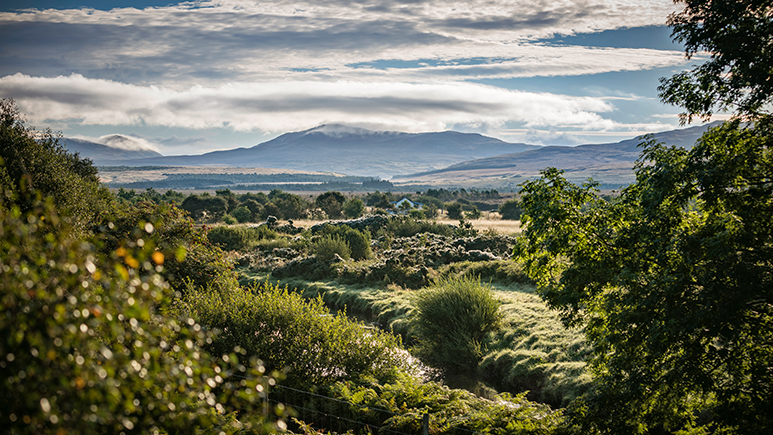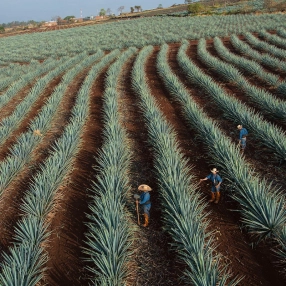We’re a global leader in premium drinks, the most exciting consumer products space.
We’re proud to have launched a peatland restoration programme in 2025, investing up to £5 million over five years to protect and restore Scotland’s vital peatlands.
Together with Caledonian Climate and Wetlands International, this programme will help to restore up to 3,000 hectares of degraded peatland by 2030. We will identify, co-fund projects and take collective action with our partners to help restore depleted peatlands, increase carbon storage, enhance biodiversity and improve water management in some of the country’s most iconic and fragile landscapes.

Funding
Partnership working
Science-based methods
Best practice monitoring
Community benefits
A collective action model for impact
Alongside our science-based restoration approach, we want to work in partnership with landowners, government bodies, conservation groups and research institutions as there's a greater impact when take collective action. Together we will identify and co-fund projects, measure the impacts of our work on carbon, water and biodiversity, helping to advance scientific understanding of the environmental benefits of peatlands and sharing what we learn to define best practice for the industry.
Our collective action model aims to maximise the £5 million investment to leverage additional funding sources and ensure restoration activities contribute to wider landscape-scale ambitions across Scotland.
The progress we've made
Since launch, we’ve announced that we’ll be working with RSPB Scotland, Suntory Global Spirits and The Glenmorangie Company Company to restore an expected 1,000 hectares of peatland at The Oa nature reserve on Islay. Over the next five years, along with our partners, we will collectively contribute £1.6million to restore the degraded peatland and further our scientific approach to restoring the precious resource.
Our commitment
This programme represents more than environmental investment, we aim for it to be a blueprint for collective action that protects the natural resources our industry depends upon whilst creating lasting benefits for climate, water, biodiversity and communities.
The programme builds on wider, long-term innovations across our business, to support an integrated approach to peat-use – including innovations in our maltings process to maximise the efficient use of peat, as well as early-stage work to explore how peat-smoke could be recirculated in the maltings or recycled from other sources.
We’re also taking a transparent approach. We’ll be sharing our methods, results and learnings with the sector so we can address common issues, challenges and successes we find through our restoration programme.
If you would like to know more and work with us on the peatland programme, please reach out to our programme delivery partner, Caledonian Climate [email protected]






